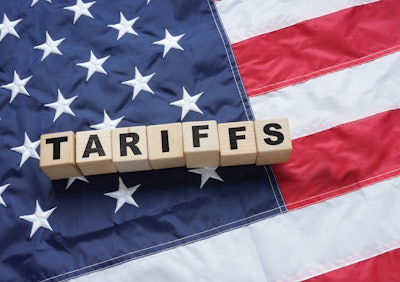
The GEP Global Supply Chain Volatility Index jumped to -0.17 in June, from -0.46 in May, its highest in 2025 as worldwide supply chain activity picked up despite the 10% tariffs imposed by the U.S. administration.
“In June, Europe shook off its long slump and global supply chains ran at full capacity — despite the uncertainty and on-and-off again tariffs,” says John Piatek, VP, consulting, GEP. “It’s the calm before the storm. Under the surface, companies are putting in place contingencies: stockpiling inputs, reshaping supplier networks, near-shoring operations, and securing supply chain financing to mitigate tariffs after the ‘pause’ ends.”
Key takeaways:
· For the first time in more than two years, European manufacturers operated at full tilt, driven by front-loaded orders from U.S. customers and a rebound in both domestic and export demand, particularly across Germany.
· In North America, demand for inputs surged as U.S. manufacturers moved quickly to secure inputs – commodities, parts, components and raw materials – ahead of a potential end to the current tariff pause.
· Asia’s supply chains also showed signs of recovery, with stronger activity in India, Japan, and South Korea. However, spare capacity remains across Southeast Asia, where factory purchasing continues to lag, notably in China.
· Notably, there is no evidence in the data of cost inflation escalating dramatically, despite the tariffs.
· Global factory purchasing activity continued to trend upwards in June, with demand at its most robust in just over a year. This was driven by a considerable rise in North America, driven by the United States, as manufacturers ramped up buying ahead of the pause on U.S. tariffs coming to an end.
· There were increased reports from businesses of a rise in stockpiling due to price or supply concerns during June. Mentions of safety buffers being built into warehouses were their highest so far in 2025 globally, with the prospect of higher tariffs driving procurement managers into precautionary action.
· The global item shortages indicator, which measures the prevalence of supply problems, remains historically low, indicating robust availability.
· Suppliers’ workforce capacity remains sufficient to process current order loads. Reports of manufacturing backlogs rising due to staff shortages remain stable at historically typical levels.
· Global transportation costs were once again in line with their long-term average in June. Reports from surveyed businesses of logistic cost pressures remain anchored.



















